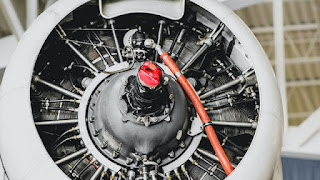The 3 Keys to Successful Hydraulic Design
Hydraulic design can be used to create any type of structure and the keys to success are quite similar no matter what it is.
Hydraulic design is a system of engineering that makes structures easier to build. It consists of using water as a medium to move large objects. You have probably heard of hydraulic lift systems. These lift machines move heavy objects from one place to another. They are used in many places such as construction sites, factories, and hospitals. There are several other uses of hydraulics, such as water pressure and plumbing, power generation, and irrigation. The principle behind this is quite simple.
Hydraulic Design - The Importance of Flow
Hydraulic design is about using the principles of fluid mechanics to understand human behavior, and then applying that knowledge to the creation of products, experiences, and interactions. If we look at human interaction as a process of flow (like water flowing through pipes), we can use this analogy to better understand human behavior. Human behavior can be thought of as a process of flow. In each interaction, we are simultaneously experiencing products (the things we see and hear), experiences (the emotions and thoughts that go along with those products and interactions), and interactions (the way those emotions and thoughts are shared with others).
Hydraulic Design - How to Design a Water System
Hydraulic design is the design and engineering of water systems. This involves understanding the dynamics of water flow through a system, designing the layout of water distribution and storage tanks and pipes, and figuring out the best place for pumps and valves. Hydraulic design is important for understanding the impact of plumbing layout decisions on water usage and saving water. It’s also important for understanding the amount of space that various systems occupy in a building. The hydraulic design includes knowing how to calculate pipe sizes for various applications.
The main thing to remember with hydraulic design is that it’s all about the flow. Flow creates the energy necessary to drive the system. This means that a lot of the work is done before you even get started. For example, you should figure out what kind of water supply you’ll need (or if you’ll need a new source of water). You’ll also need to decide how big you want your water tank to be, how many outlets you want, and how often you plan to change the filter.
If you decide to use hydraulic design, you should first figure out what kind of pump you want to use. You will need a power supply to operate the pump. In addition to that, you will also need a reservoir or tank. The size of the tank will depend on the amount of water that you will need. After you buy the pump, you need to find a place to install it. You should decide if you want to install the pump inside the house or outside. Then, you need to decide how much pressure you want to put into the water and how much force you want the water to move through.
Conclusion
In conclusion, This is an important lesson because when we are designing and building, we should remember that we are building for eternity, and not for the day, the month, or even the year. This is why it is so important to design for the future, and not only today. Our business may not last for a hundred years, but the work we do is built to last for all eternity, so we must take that into consideration and ensure that our designs are built for the long haul.



Comments
Post a Comment